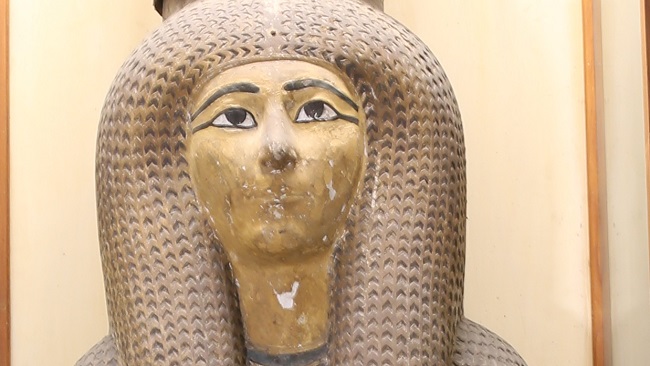
The sarcophagus of King Seqenenre Taa
As part of Ahram Online's daily series on the much-awaited Pharaohs' Royal Parade, which will be held on 3 April, today's mummies are of King Seqenenre Taa and his daughter Queen Ahmose Nefertari.
King Seqenenre Taa and Queen Ahmose Nefertari are among 22 mummies that will be transferred during the parade from their current place at the Egyptian Museum in Tahrir to their final exhibition destination at the National Museum of Egyptian Civilisation (NMEC) in Fustat.
King Seqenenre Taa was the last king of the 17th Dynasty. He was the ruler of Thebes (modern day Luxor). History remembers Seqenenre Taa as the king who began the war of liberation against the Hyksos, a war which was inherited by his sons Kings Kamose and Ahmose I.
Seqenenre Taa’s mummy was found inside a massive anthropoid coffin of cedar in the cachette of Deir Al-Bahari, west of Luxor in 1881.
Studies revealed that the king died in his 40s. His skull bears marks of horrific wounds, almost certainly the result of a battle against the Hyksos
His daughter, Queen Ahmose-Nefertari, was married to her brother, Ahmose I, the founder of the 18th Dynasty and the New Kingdom. The royal couple bore several children, including Amenhotep I, who succeeded his father as king.

The sarcophagus of Queen Ahmose-Nefertari
She was powerful and influential during her lifetime, she maintained her power during the reign of her son, Amenhotep I. Both mother and son were venerated as a divinised couple by the Egyptians, especially in the Necropolis of Deir Al-Medina.
The mummy of the queen was found in a massive anthropoid coffin of wood and cartonnage in the Deir Al-Bahari cachette in 1881.
Short link: